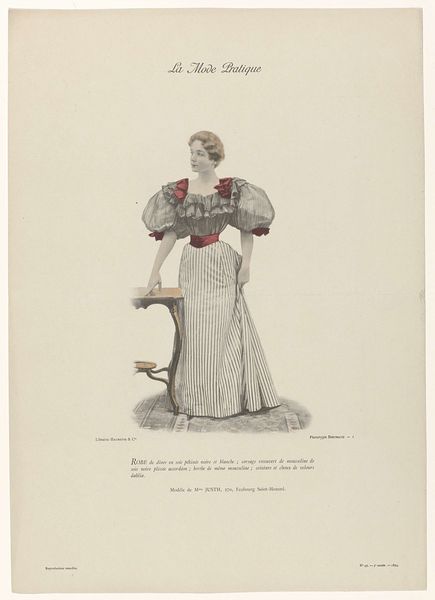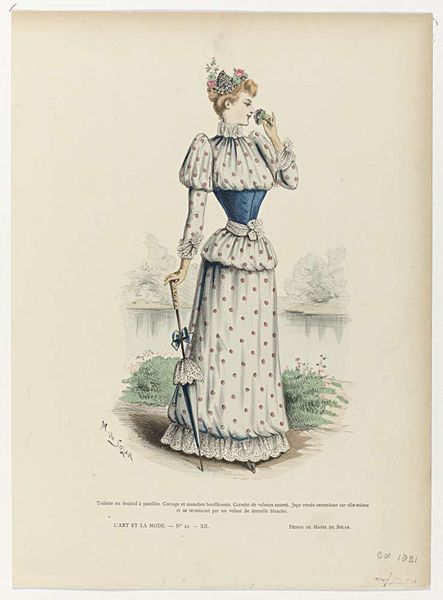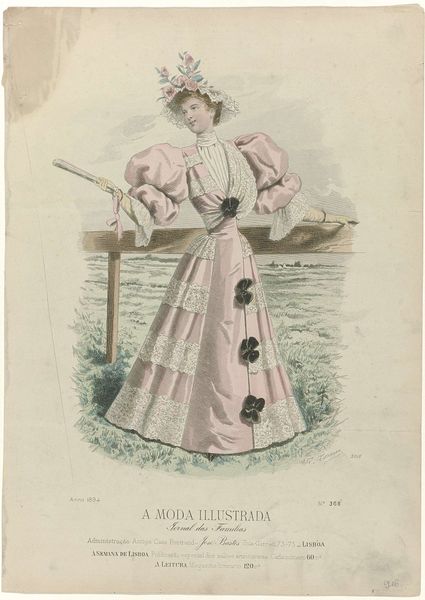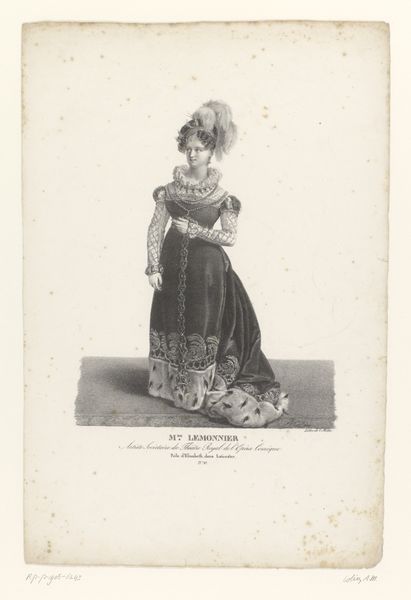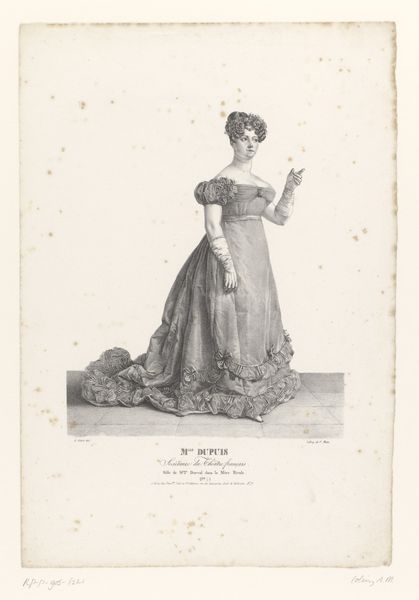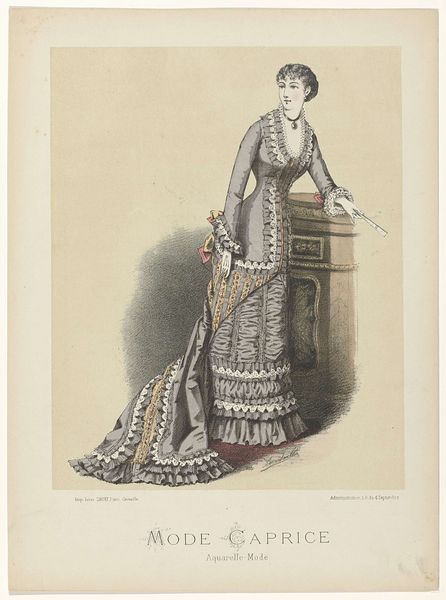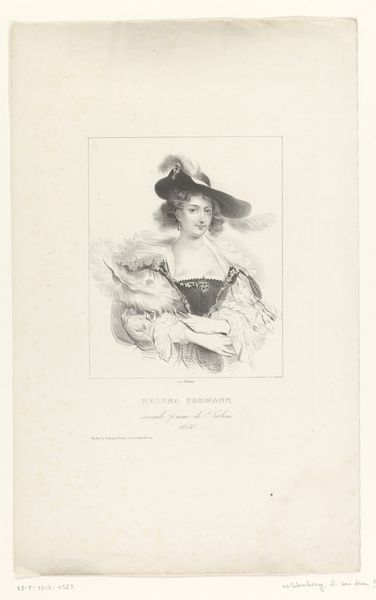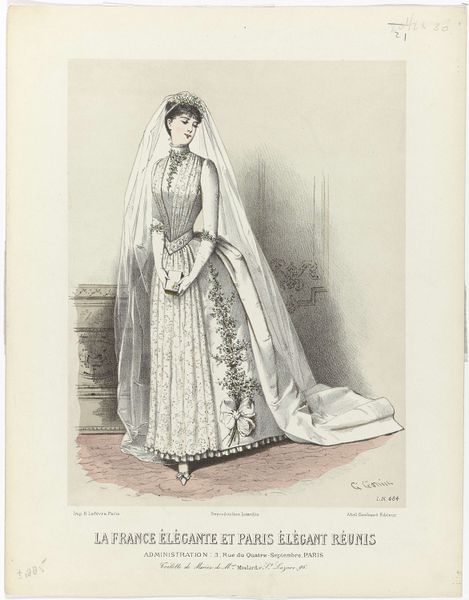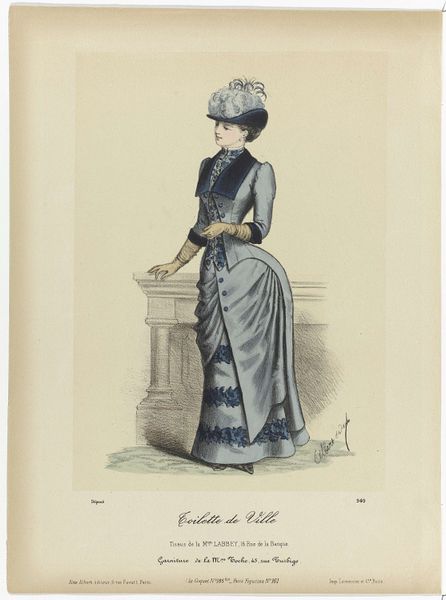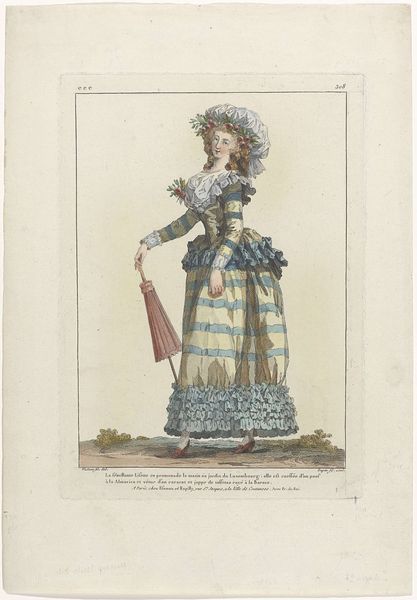
Le Moniteur de la Mode, 1896, No. 27, Pl. 329C: Toilette de Mad.e Thirion (...) 1896
0:00
0:00
painting, print, watercolor
#
portrait
#
art-nouveau
#
painting
# print
#
figuration
#
watercolor
#
intimism
#
watercolour illustration
#
watercolor
Dimensions: height 395 mm, width 284 mm
Copyright: Rijks Museum: Open Domain
Curator: Immediately, I’m struck by how… wistful this feels. There’s something so delicately sad in her posture. Editor: This is a print entitled “Le Moniteur de la Mode, 1896, No. 27, Pl. 329C: Toilette de Mad.e Thirion…”. It comes to us from A. Portier. It’s a watercolor that feels rooted in intimism while also echoing an emerging Art Nouveau sensibility. Curator: Intimism—yes! It’s funny how these fashion plates can reveal such intimate narratives. That demure gaze and how her fingers curl gently over the parasol handle – you can imagine a whole internal world! Though I have to say those mutton sleeves are shouting for attention; I wouldn’t mind a pair myself for added flair, like a character from a steampunk fairytale. Editor: Those sleeves speak volumes, don't they? A powerful, assertive silhouette disguising a softer interiority, or maybe a reflection of women taking on more power in the public eye. It's the ornamentation that captivates, drawing your attention up toward her face. Those complex embroidered motifs almost serve as talismans—powerful symbols deflecting attention from some concealed vulnerability. The woman as art object, yes, but an art object imbued with agency. Curator: Mmm, talisman... I like that. Her entire fashion ensemble is carefully orchestrated. It is interesting how costume has historically created both inclusion or exclusion based on your dress within society. What do you think this would express for a young turn of the century parisienne? Is it empowering or restraining, what does it reflect? Editor: Good point about its function for Parisians, or a larger community for that matter! The image's design is built of visual layers that echo power, vulnerability, aspiration, and performance – all coexisting within the artwork. I think it's the artist showing us it can be all of those things for a woman in Parisian society, right there in that turn of the century moment you mentioned! Curator: It seems there is some sense of being trapped or poised for freedom that lives with the lady. All the while we gaze back at a fragment from a captured and stylized, but now slightly fading, moment. Editor: I agree; a fleeting glimpse of fashion preserved, reminding us of time’s gentle sway on memory.
Comments
No comments
Be the first to comment and join the conversation on the ultimate creative platform.
